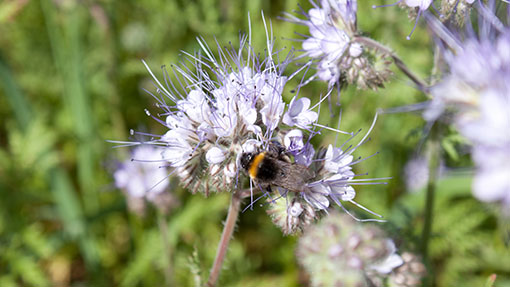Cover crops aid soil structure in blackgrass battle

Blackgrass problems have burgeoned across the country and in the fight against it farmer Jim Bullock has significantly increased his spring cropping area, which now makes up over half of the farm’s total acreage.
“We grow around 280ha of arable crops,” he explains. “But in recent years we’ve relied less on winter cropping and increasingly on spring-sown crops to allow us to better control blackgrass.”
On his predominantly silty clay loams, Mr Bullock reckons to achieve the same margins with spring oilseed rape as he would with an autumn-drilled rape crop. Importantly, it also helps to ease the workload.
See also: Cover crops part of long-term approach to farm success
Spring crops have also proved much more reliable as waterlogging often makes autumn establishment a challenging task.
The move has also allowed Mr Bullock to adopt an approach of keeping land at Mill Farm near Malvern covered over winter with catch crops. The cover-cropping regime uses mixes of alternative crops and grasses specifically chosen to work at different levels within the soil profile to help improve soil structure and replace organic matter.
“One of the key elements is not to lose the nutrients we have applied. For that reason we chose a mix of different species with varying rooting depths. Because of their activity throughout the soil profile, some bring nitrogen up from one level and others carry phosphates up from another. That way they’re secured and available to crops the following year.
“Part of the thinking behind our approach is that we want to direct drill everything in the future. To do this we need to improve the soil’s friability and increase its organic matter in the top 10-15cm to allow the drill to work better whatever the conditions.
“We don’t have any livestock, so I can’t add a lot of farmyard manure to the land. Basically I’m trying to grow our own compost.”
Following a visit to Germany three years ago where Mr Bullock saw the concept in action – and then again at trials in UK – he decided it was time to give it a try.
Growing
Last year Mr Bullock drilled two different mixes from German plant breeder DSV’s Terralife range, including MaizePro, which contains 13 different plant types including field peas, forage rye, clovers, vetches and phacelia. The other was Biomax, which includes bristle oats, buckwheat, oats, mustard and sunflower.
The previous crop was combined, the straw chopped and levelled and glyphosate applied to clear up any weeds. He then direct drilled the mixes with a basic tined drill.
“I thought we should treat it as a proper crop if we wanted to get the best results from it, so we rolled the seedbed, put on slug pellets, applied 18-46-0 DAP fertiliser and the first plants started coming through in just four to five days.”
Both mixes got away rapidly in the warm autumn, with the various species growing and dying back through the growing cycle.
“We had green cover right through until the end of January. It was very interesting seeing all the different species coming through – particularly some of the lesser-known plants.
Nitrogen
With no frost over the winter, the crop was eventually sprayed off in late March. Mr Bullock noticed that the N-fixing clover carried on through the winter, while the pea roots had nodules on them all the way through.
“I’ve grown cover crops like mustard and vetches before but, in truth, never really got much benefit from them other than mopping up a bit of nitrogen because the rooting is all at the same depth.
Having analysed the crop, Mr Bullock observed a noticeable difference in the rooting zones of the various plants in the mixes. The deep-till radish was particularly impressive, going down more than 2ft and really opening the soil up.
In addition, after one of the wettest winters ever recorded, he noted a difference in the early growth and root development of the following spring-sown rape crop where the mix had created better drainage.
With increasing blackgrass problems, more emphasis on looking after soils and greater rotational diversity driven by the three-crop rule, he believes cover crops will play a big part in his future crop management, and that of others.
DSV’s Mike Mann agrees, saying recent growing conditions in the UK and predictions of a more variable climate in the future are making many producers think about how they can build greater resilience into their crops and rotations.
“Many believe we’re at the stage of re-engineering UK cropping with a growing number of influences shaping how we will farm in the future.”
“Whatever the outcome, legislative pressure, environmental control and the need to rethink our production approach are driving us to more diverse arable production systems.”

